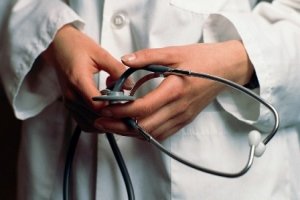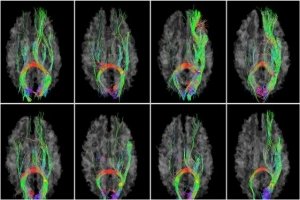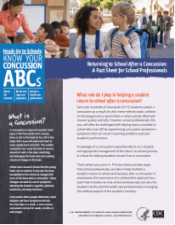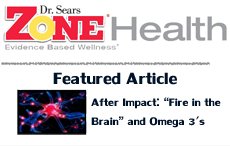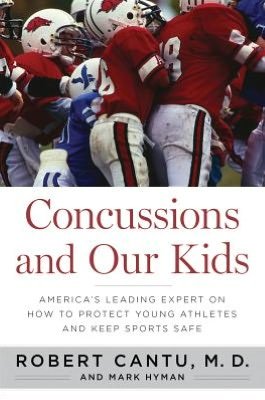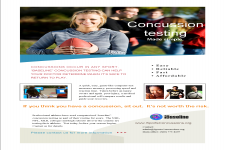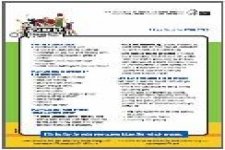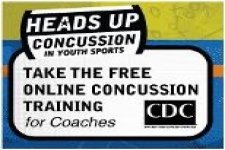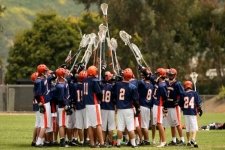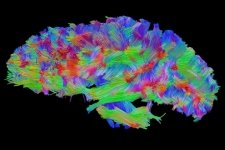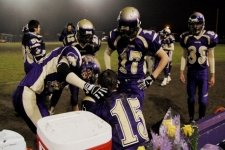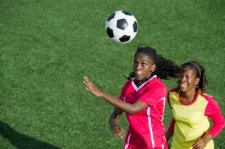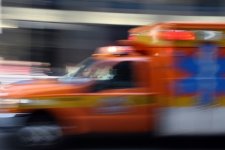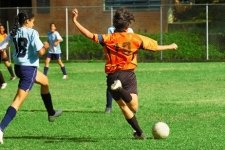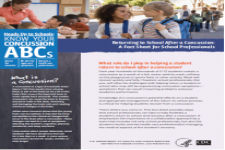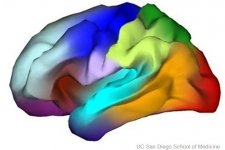Return-to-play
- Created on Friday, 07 January 2011 07:01
- Last Updated on 16.01.2013
- Published Date
Adults heal faster than youth
Knowing when an athlete's brain has completely healed from a concussion is difficult. A trained medical professional should make the return-to-play (RTP) decision for each athlete individually. They will want to make sure all physical and cognitive symptoms have resolved at rest and during exertion. A balance assessment and cognitive evaluation may also be included in the assessment.
If the athlete has taken a cognitive "baseline" concussion test at the beginning of their sports season (offered by many school districts and sports organizations) a second test will be administered and the results of the two tests will be compared. When the post-injury results match the pre-injury "baseline" results, and all physical and cognitive symptoms have disappeared at rest and during exertion, the medical professional may be comfortable allowing the athlete to return to activity. Other factors the medical professional may consider include the number of previous concussions, the severity of symptoms, and the type of sport the athlete is engaged in.
Give it time
Most concussions heal within a few days to three weeks. It is impossible to predict however, how long any one individual's recovery process will take. The fastest road to recovery is to limit cognitive activity such as reading, TV, texting, or computer usage, as well as physical activity. It is important not to re-injure an already injured brain or to place any undo stress upon it while it heals. Learn more...
It's a gradual process
After all physical and cognitive symptoms have disappeared, it's very important to increase physical exertion gradually. Successfully completing the gradual return-to-play protocol developed by a panel of international experts will help guide an athlete's recovery. If symptoms return during this process, then more healing time is required. Learn more...
Questions/comments? Contact Jean Rickerson at This email address is being protected from spambots. You need JavaScript enabled to view it.
Brain Health
It is rare for a sports-related concussions to result in a more serious injury such as a skull fracture or hematoma. Nonetheless, it pays to be aware that catastrpohic injuries do sometimes occur as ...
read more...-
CT scans may increase brain cancer risk
Children and young adults scanned multiple times by computed tomography (CT), a commonly used dia...
-
Sub-concussive impacts may affect learning
MINNEAPOLIS – A new study suggests that head impacts experienced during contact sports such as ...
-
Physical activity boosts learning
INDIANAPOLIS – School administrators looking to restructure the academic schedule should consid...




Neuroscience
Athens, Ga.- University of Georgia researchers have developed a map of the human brain that shows great promise as a new guide to the inner workings of the body's most complex and critical organ.
...
read more...-
Does CTE infect neuron to neuron?
NFL Hall of Famer "Iron Mike" Webster's life ended in 2002 when he suffered a heart attack at age...
-
Progesterone seems to protect neurons after injury
It is not yet known why girls suffer concussions at a higher rate than boys. The most prevalent...
-
Amino acids may restore concussion's chemical imbalance
Concussions are often called the "invisible" injury because they are usually not detectable by t...
Resources
- School professionals play an important role in the health of all students. Recognizing the signs and symptoms of concussion is important, as is managing their return to school ...
- CDC's Concussion Training for Clinicians
-
Concussion Education Video Programs - Free and Easy
Parents, athletes, coaches and medical professionals have access to concussion education created...
-
New concussion guidelines for team physicians
INDIANAPOLIS – Team physicians who assess and treat athletes suspected of concussion have new ...
quick links
Latest News
Concussions Occur...
...in Any Sport
REMOVE athlete from play
REFER to medical provider
REST no sports, no texting/TV
RETURN only with doctor's OK
Source: Children's Hospital Boston, Sports Concussion Clinic












